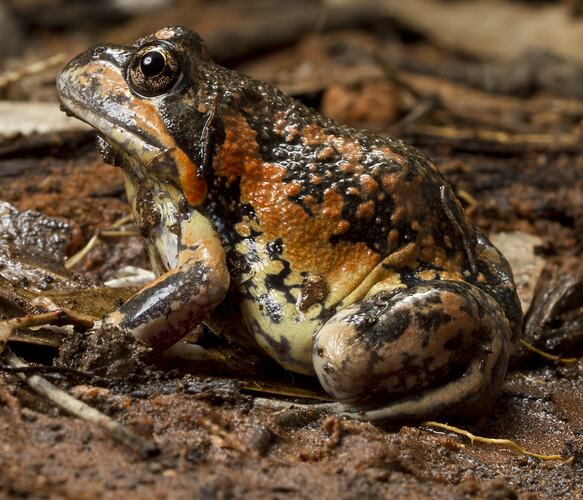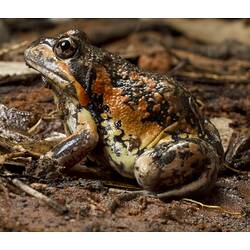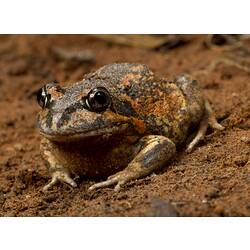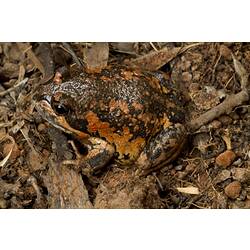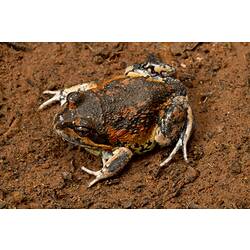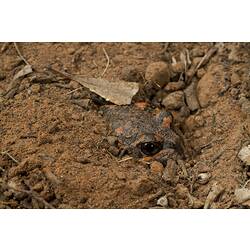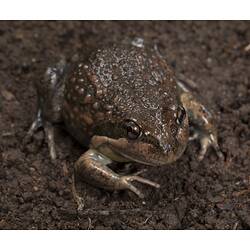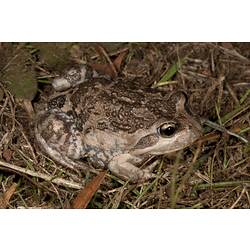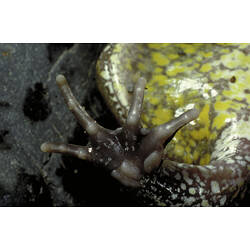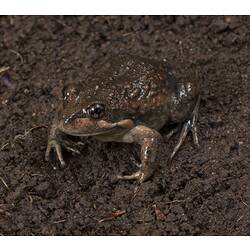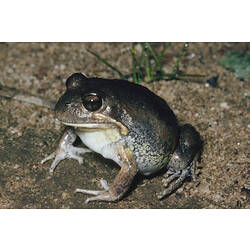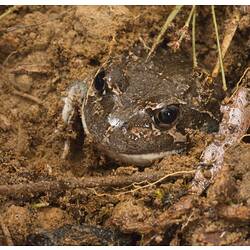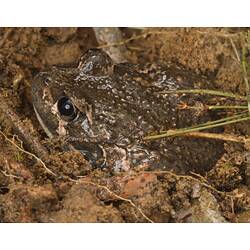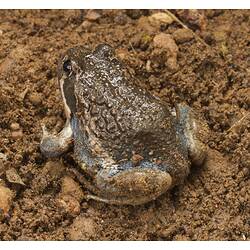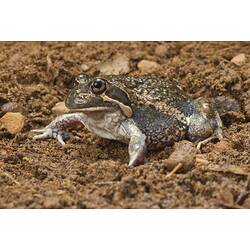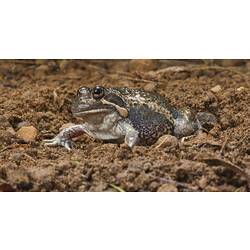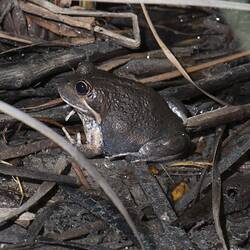General Description
Pale raised stripe from below the eye to above the base of the front leg. Blackish stripe that passes through the eye. Large lump on the back legs (called the tibial gland). Grey or brown above with blackish markings of marbling, blotches or flecks. Sides of thighs mottled black and blue. Whitish belly which is often mottled with grey, throat sometimes yellow. Back either smooth or with small round warts. Only very small amount of toe webbing. Body length up to 8 cm. Call a series of "bonks" sounding similar to the plucking of banjo strings.
Biology
Banjo Frogs burrow in the soil and are sometimes found when people dig in their backyard. Their eggs form a large, white, floating raft in still water. Males mainly call from spring to autumn (September to March). Calling is particularly intense after heavy rainfall.
Distribution
South-eastern Australia, from south-eastern South Australia through Victoria and eastern New South Wales to south-eastern Queensland.
Habitat
Heaths and sclerophyll forests, woodland, farmland. Frogs breed in dams, ponds, stream pools and other permanent waterbodies.
More Information
-
Animal Type
-
Animal SubType
-
Brief Id
A large burrowing frog, with a prominent lump on hind leg and pale stripe from mouth to top of arm, with a distinctive "bonk" call.
-
Colours
Black, Brown, White, Yellow, Grey
-
Maximum Size
8 cm
-
Habitats
-
Diet
Insects
-
Endemicity
-
Commercial
No
-
Conservation Statuses
CITES: Not listed, FFG Threatened List: Not listed, EPBC Act 1999: Not listed, IUCN Red List: Least Concern
-
Taxon Name
-
Scientific Author
Peters, 1863
-
Common Name
Eastern Banjo Frog
-
Other Names
Pobblebonk
-
Kingdom
-
Phylum
-
Subphylum
-
Class
-
Subclass
-
Order
-
Family
-
Genus
-
Species Name
dumerilii
